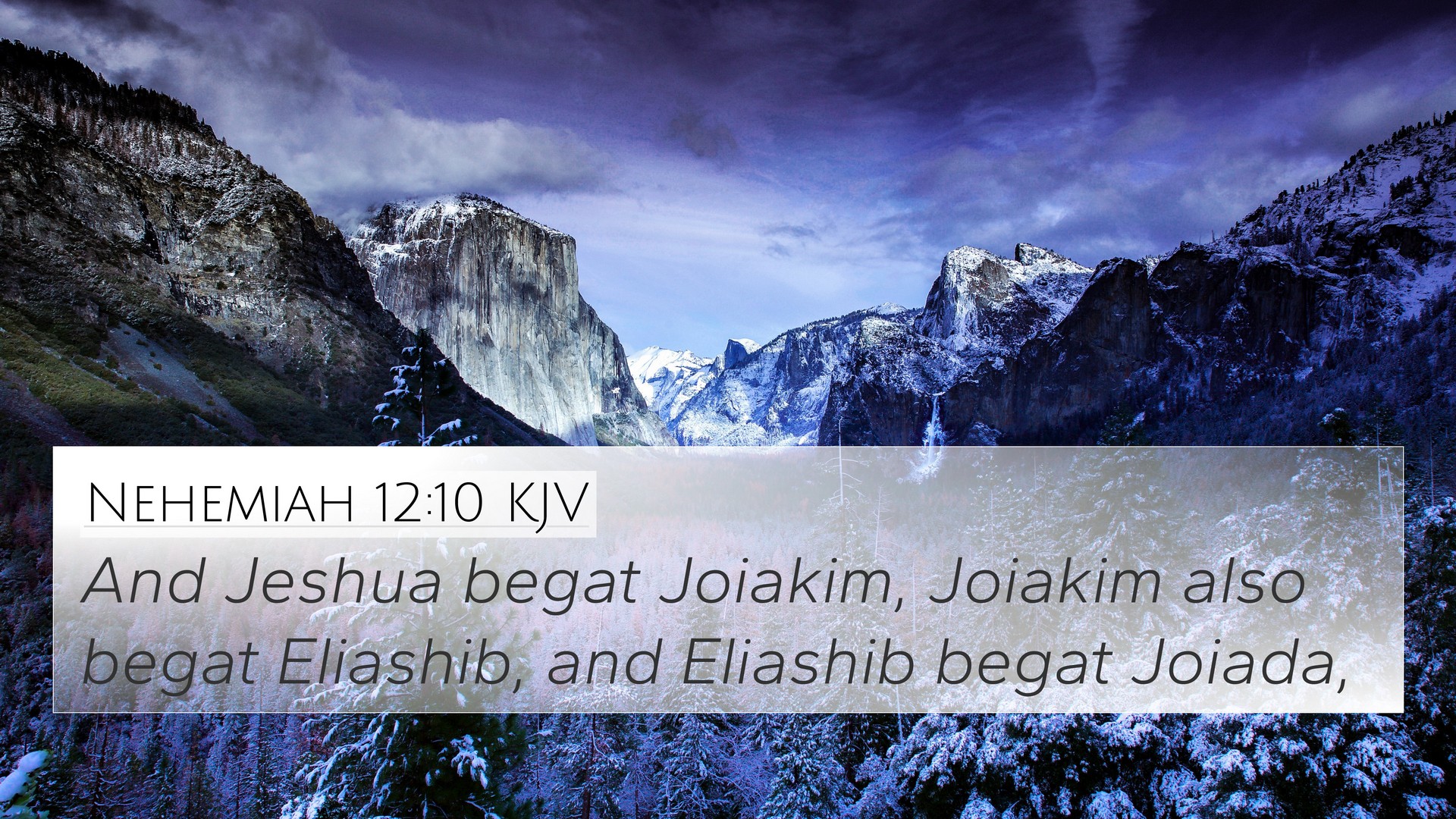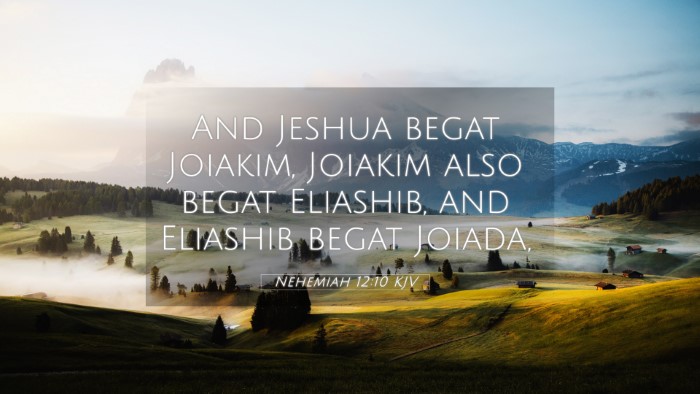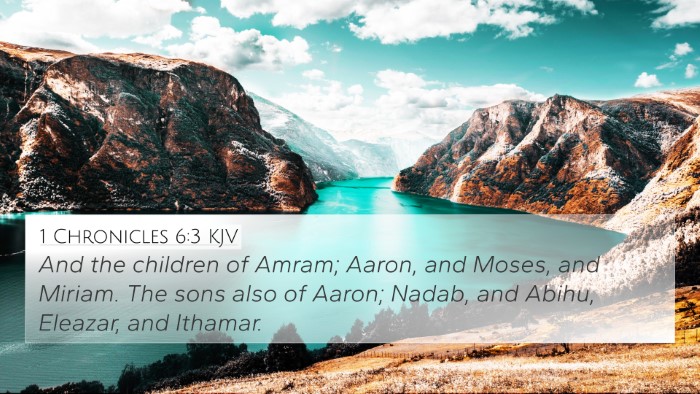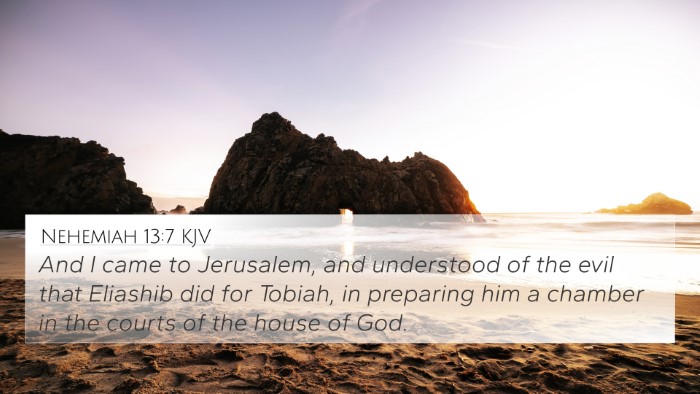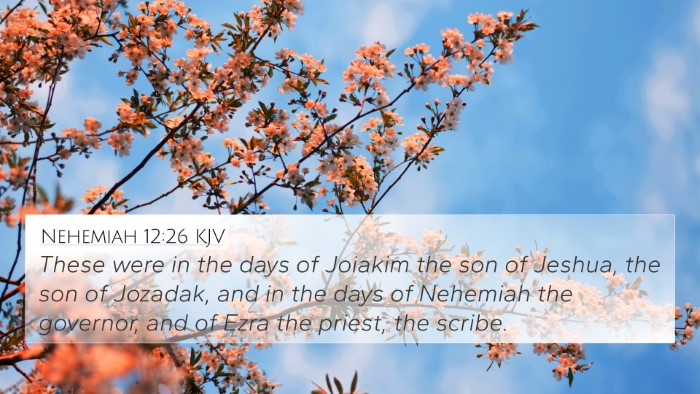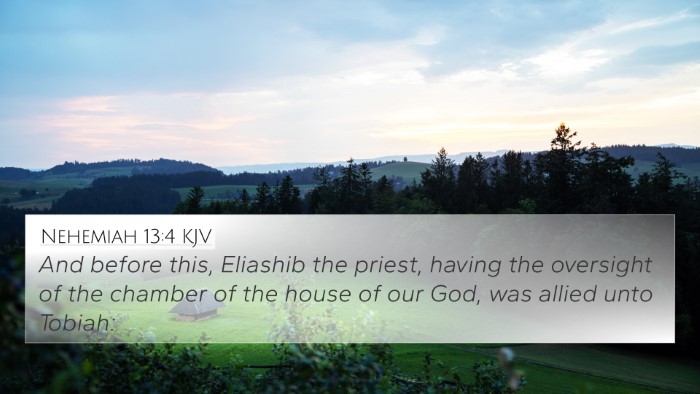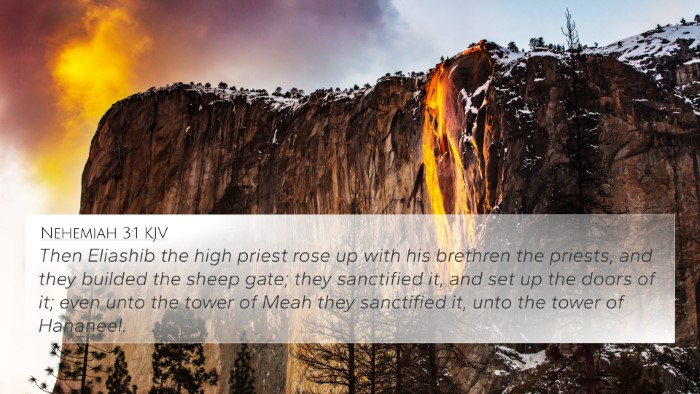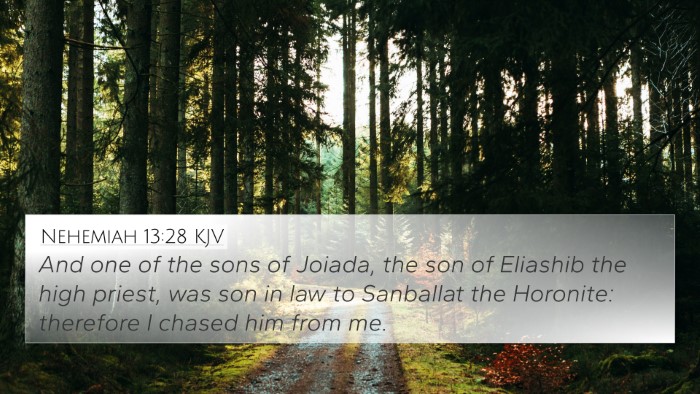Meaning and Interpretation of Nehemiah 12:10
Bible Verse: Nehemiah 12:10 - "And Jeshua begat Joiakim, and Joiakim begat Eliashib, and Eliashib begat Joiada."
Overview
This verse is a part of the genealogical record of the high priestly lineage during the post-exilic period of Israel's history. It highlights the succession of priestly leadership that is paramount for understanding both the religious practices and the community's restoration in Jerusalem after the Babylonian exile.
Commentary Insights
- Matthew Henry:
Henry emphasizes the importance of genealogies in the Bible, indicating that they signify the fulfillment of God's covenant promises. The lineage from Jeshua to Joiada shows the continued priestly office, vital for maintaining worship and the Law in Jerusalem.
- Albert Barnes:
Barnes notes that the record of high priests helps establish the legitimacy of the priesthood during this period. The names listed signify not just succession but a respect for ancestry that denotes authority and spiritual heritage necessary for the people of Israel.
- Adam Clarke:
Clarke discusses the significance of Joiakim and his successors, stressing the role that the priestly line plays in the re-establishment of worship practices in Jerusalem. He argues that these records affirm the continuity of God's plans and work through the generations.
Cross-References
Nehemiah 12:10 has multiple Bible verse cross-references that illuminate its context and significance:
- Ezra 3:2: "Then stood up Jeshua the son of Jozadak, and his brethren the priests, and Zerubbabel the son of Shealtiel, and his brethren..." - This verse links Jeshua to significant leaders in the restoration of the temple.
- Zecharaiah 6:11: "Then take silver and gold, and make crowns, and set them upon the head of Joshua the son of Josedech, the high priest." - Relates to the high priestly role foretold regarding Jeshua.
- Matthew 1:12: "And after they were brought to Babylon, Jeconiah begat Salathiel; and Salathiel begat Zorobabel." - Shows the continuity of genealogical lines leading to the New Testament.
- Hebrews 7:14: "For it is evident that our Lord sprang out of Judah; of which tribe Moses spake nothing concerning priesthood." - Highlights priesthood continuity through different lines.
- Ezra 2:36-39: Lists the priests returning from Babylon, essential for understanding the importance of priestly lineage.
- 1 Chronicles 5:29: "And the chief of the priests was Jehoiada..." This genealogy lineage connects earlier priesthoods to the restoration period.
- Nehemiah 12:1: Lists who were the priests and Levites who went up with Zerubbabel, linking back to the priestly line.
Thematic Connections
The verse constructs thematic Bible verse connections that span across both the Old and New Testaments:
- Priestly Authority: Understanding priestly roles in revitalizing worship is critical for comprehending themes in Hebrews regarding Jesus as the high priest.
- God’s Promises: The genealogies emphasize fulfilled promises made to Israel, linking back to God's covenant with Abraham.
- Restoration and Renewal: The establishment of the Temple and priesthood reflects themes of renewal after judgment and exile seen in Lamentations and Isaiah.
Application in Study
How to Use Bible Cross-References:
Utilizing tools for Bible cross-referencing, such as a Bible concordance or a cross-reference guide, helps deepen understanding. Enhanced study methods include:
- Identifying connections between Old and New Testament verses to see continuity in God’s work.
- Exploring detailed cross-reference themes especially in capitalized moments of religious significance.
- Conducting comparative studies of Pauline epistles to enhance understanding of theological parallels.
Conclusion
Nehemiah 12:10 serves not just as a historical record but as an essential link in the broader narrative of God's ongoing relationship with His people. Through scriptural cross-referencing and exploration of biblical themes, readers can gain profound insights into God's faithfulness, the importance of leadership, and the essential continuity of worship as expressed through the lineage of high priests.
